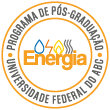Banca de QUALIFICAÇÃO: SHEVINE SILVA OLIVEIRA RISSO
Uma banca de QUALIFICAÇÃO de DOUTORADO foi cadastrada pelo programa.STUDENT : SHEVINE SILVA OLIVEIRA RISSO
DATE: 17/07/2023
TIME: 10:00
LOCAL: meet.google.com/jci-brrm-ocj
TITLE:
THE WATER-ENERGY-FOOD NEXUS AND CONFLICT AND COOPERATION: A METHODOLOGICAL NARRATIVE
PAGES: 80
BIG AREA: Outra
AREA: Multidisciplinar
SUMMARY:
In this project, we present a research proposal to be developed as part of the PhD program in Energy at the Center for Engineering and Applied Social Sciences of the Federal University of ABC. The research falls within the concentration area of Environment, Society, and Energy Planning, specifically in the field of Planning and Operation of Energy Systems. The proposed study aims to analyze the water-energy-food nexus and the management of conflicts and cooperation in multi-use reservoirs, especially in contexts where different interests and demands compete for access and use of water. In the case of multi-use reservoirs such as Sobradinho, there is a diversity of actors and sectors involved, including agriculture, human consumption, and energy generation, among others. This variety of uses can generate conflicts of interest since each sector seeks to maximize its benefits in relation to water use. Conflict management in this context aims to balance these demands by seeking negotiated solutions and forms of cooperation among the different actors involved. This may involve defining water use rules, equitably distributing resources, and implementing conflict resolution mechanisms. The Transboundary Water Interaction Nexus (TWINS) method was proposed by Mirumachi in 2015 as an approach to analyze the interactions between different water uses in transboundary contexts. It is based on the interconnection of three main elements: water, energy, and food, which are considered crucial for water sustainability and security. They are analyzed together to understand the implications of their interactions. The main objective is to understand how actions and decisions related to water in a shared reservoir affect the different sectors and actors involved. The method seeks to identify synergies and trade-offs among the different sectors, taking into account the needs, demands, and interests of the countries involved. One of the main advantages of this method is its ability to provide a comprehensive and integrated view of the interactions between water, energy, and food in a river basin. It allows for the identification of cooperation opportunities and benefit-sharing among the stakeholders, as well as an understanding of potential conflicts and challenges. When applied to a multi-use reservoir, it can be used to assess and plan water management in a more efficient and sustainable manner. It enables the analysis of how water allocation for different uses, such as human consumption, agriculture, hydroelectric power generation, aquaculture, among others, can impact the balance and sustainability of the system. Additionally, it can help identify potential conflicts of interest and promote cooperation among the various actors involved in water management.
COMMITTEE MEMBERS:
Presidente - Interno ao Programa - 1544340 - PATRICIA TEIXEIRA LEITE ASANO
Membro Titular - Examinador(a) Interno ao Programa - 1734918 - PAULO HENRIQUE DE MELLO SANT ANA
Membro Titular - Examinador(a) Externo à Instituição - ALEXANDRE UHLIG DE OLIVEIRA
Membro Suplente - Examinador(a) Interno ao Programa - 2236209 - RICARDO DA SILVA BENEDITO
Membro Suplente - Examinador(a) Externo à Instituição - GRACIELI SARTÓRIO CARDOSO DE LIMA - SOLARE




